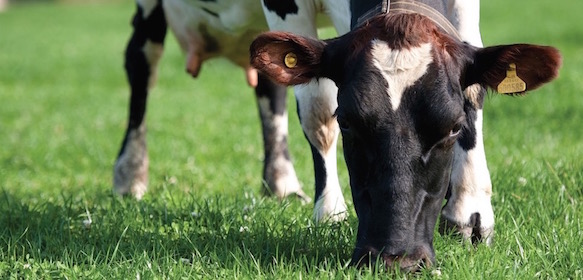Highly digestable grass has high energy and sugar levels and if this is not balanced adequately then cows can suffer from SARA (Sub Acute Ruminal Acidosis). Often the first sign of this is depressed butterfat (by up to 0.3%) which has an immediate financial implication in terms of milk income. Other signs include:
- Drop in rumen pH
- Depressed intake
- Laminitis
- Infertility
- Mastitis
The three main causes of ruminal acidosis are excessive intake of rapidly fermentable carbohydrates, inadequate ruminal buffering and inadequate ruminal adaption to a highly fermentable diet.
You may have previously thought that acidosis only occurs when cows are fed winter rations but it can also be a problem on grazed grass. A study carried out by University College Dublin in 2006 showed 53% of cows had a rumen pH <5.8, which is too low for optimal feed digestion and intake, whilst 11% had a rumen pH <5.5, which meant they were experiencing SARA. These were cows 80 to 150 days in milk being fed grazed grass. Remember, high D value grass can have sugar percentages in the range of 20% to 40%, which is similar to feeding a total diet with 63% cereal!
Ideally, the rumen environment needs to be kept in the optimal pH range of 6.5 to 7.0. At this level fibre-degrading micro-organisms thrive, releasing volatile fatty acids (VFAs), the main energy source for ruminants from forage fibre. At a pH of 6.4 these micro-organisms digest about 55% of the fibre, while at a pH of 5.6 this falls to around 35%, equating to a reduction in milk yield of around 2.5 litres per day. In these acid conditions rumen papilla, the absorption fingers for nutrients, can be damaged. A further consequence is that the cow can suffer laminitis. This is often followed by hoof overgrowth, sole abscesses and sole ulcers, all of which do not appear until weeks or months after the bout of rumen acidosis.
Adding Actisaf Sc 47 to the ration can help to maintain optimal rumen pH and reduce the risk of SARA. Actisaf Sc 47 is the market leader in protected live yeast and fed at the recommended rate improves the rumen environment under acidic conditions, buffering the rumen pH and restoring the microbe population. As the rumen is an anaerobic environment removing oxygen is vital and this is one of the functions of yeast. Actisaf Sc 47’s efficacy is proven through European registration trials and dairy farmers feeding it comment on:
• Increased dry matter intake
• Increased milk yield
• Improvements in fertility
• Good rumen function
• Improved dung consistency
Overall, feeding Actisaf Sc 47 reduces the risk of SARA by creating a healthier, more efficient rumen. This promotes higher intake and better feed utilisation, ultimately leading to more productive, healthy and contented animals and more profit from the dairy herd.

